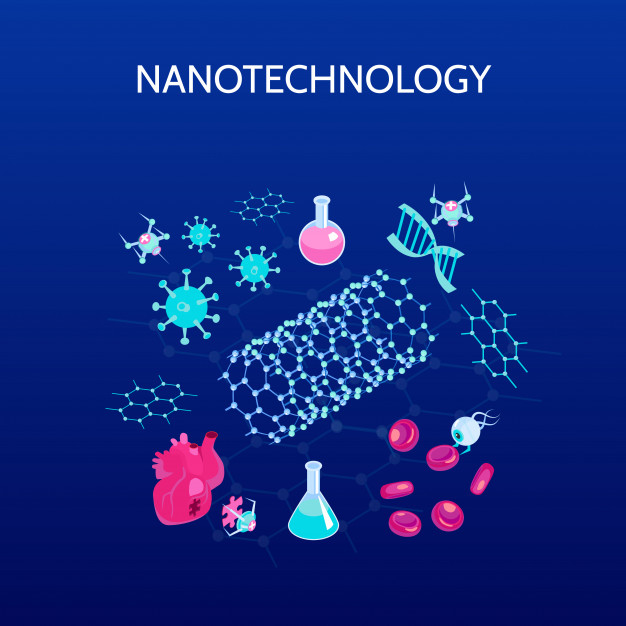
Science, engineering and technology at the nano scale are fields of research in which manipulations of matter take place at the atomic, molecular and supramolecular level, in order to obtain materials and systems with significantly improved characteristics.
To get a dimensional idea, think that 10 nanometers correspond to one thousandth of the diameter of a human hair.
Nano Technologies Strategic Consulting
The characteristics of nanostructures, especially at the electronic and magnetic level, are often significantly different from those of the same material at the mass level.
The nanostructures can be defined as a unique state of matter, especially promising new products and extremely useful.
The ability to integrate organic and inorganic nanostructures represents the premise for a new generation of advanced compounds.
There are various fields of application of nanotechnologies, from industrial materials to military technology (dual-use technology) passing through the medical-health and pharmaceutical fields.
The impact of nanotechnologies is epochal in the industrial segment, from textiles to construction, from manufacturing to aerospace, from entertainment to accident prevention, there are no industrial sectors that have not been touched and revolutionized by nanotechnologies.
In the world of consumer goods, there are many goods already marketed that incorporate nanomaterials and nanoparticles, products with unique characteristics ranging from impact and scratch resistance to ease of cleaning.
Bumpers in cars made extremely light and resistant, clothing fabrics with stain repellent properties, sunscreens more resistant to radiation, stronger synthetic bones, the list of applications already used in everyday life is huge.
Medical-Health Applications
The nanomedicine in particular, was defined by the European Science Foundation as “the science and technology of diagnosis, treatment and prevention of diseases and injuries, the algologia (pain mitigation), the preservation and improvement of human health through the ‘use of molecular tools and molecular knowledge of the human body. “
The five subdisciplines of which nanomedicine is composed are: nanomaterials and equipment, nanoimaging and analytical tools, novel therapeutics and drug delivery systems, toxicology and clinical application.
The nanotechnology are fixed at a level that blurs the line between organic and non-organic, the convergence of biological and physical.
Therefore, the separation between Life Sciences and other physical sciences becomes uncertain, a truly unique and identifying characteristic of what is commonly defined as the Fourth Industrial Revolution.
Agri-food Applications

Agriculture provides food for humans both directly and indirectly, however due to the worrying trend of world population growth and the related problem of food security, it will be necessary to use modern nanotechnologies and biotechnologies in agricultural sciences.
There are various applications in all stages of production, processing, storage, packaging and transport of agricultural products: nanotechnology is revolutionizing agriculture and the food industry by novation, through precision farming techniques, improving the absorption capacity of nutrients by plants, more efficient and targeted use of inputs, identification and control of pathologies and parasites, resistance to environmental pressures (water stress, salt stress, thermal stress, etc.), advanced processing systems, storage and packaging and much more.
The efficiency of plant protection and veterinary products in animal husbandry increases significantly through the use of nanoparticles in animal sciences.
For example silver and iron nanoparticles are used in the treatment and disinfection of livestock and poultry.
Environmental pollution levels can also be monitored efficiently and effectively using “smart” dust-based nanosensors ( smartdust ).
Based on current growth trends, the number of products and workers related to the nanotechnology segment doubles every two years, with an estimated $ 3 trillion in turnover and 6,000,000 jobs by 2020.
As already mentioned, nanotechnologies have not only exclusive application in the agri-food world and it should be emphasized that – to date – the environmental and human health risks to this phenomenon are still uncertain and more studies are needed.
The European Commission in 2013 finally proposed a possible revision of EU regulations to adapt them to the nanotechnological phenomenon, one of the regulations to be revised could be that on chemicals, REACH.
Environmental Applications
The nanotechnology play an equally critical role from the point of view of environmental applications.
The environmental applications of nanotechnology facing the development of solutions to today’s environmental problems, preventive measures for future problems resulting from energy and material interactions with the ‘ environment and any possible risk that may be posed by nanotechnology same.
Energy
The energy segment has also undergone a total revolution following the introduction of nanotechnologies.
The improvement of the use of traditional energy sources (e.g. structured nanomaterials used as catalysts for the production and refining processes of fossil fuels) and even more the efficiency of alternative energy sources (primarily renewables) is one of the factors key to achieving the Sustainable Development Goals.
The nanotechnology are the essential element in this process of change, through the application of design “top-down” and “bottom-up” in the realization of energy conversion systems.
The production of energy actually represents a set of chemical and physical processes, aimed at allowing the initial conversion of energy (eg luminous in solar and kinetic in wind) into electrical energy.
We therefore speak of devices for energy conversion (generation systems and storage systems) such as for example with batteries, in which electrical energy is converted into potential energy, then accumulated in the chemical bonds that are formed in the charge of the battery, finally released as electrical energy for use.
